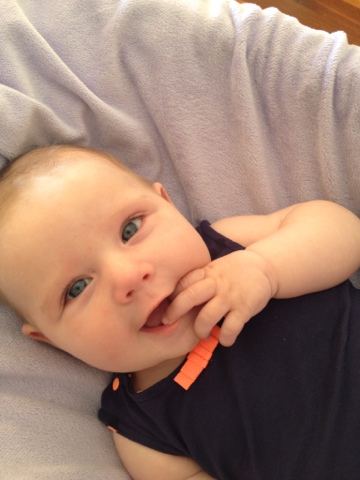Whilst following my blog you may ask 'why is hearing so important?'
I guess in some ways perhaps it's not.
Many people communicate through sign language and get by just fine, however, in our predominantly hearing world, to find others who communicate through sign can be a challenge. AUSLAN (Australian sign language) is certainly an option and I have always wanted to learn but have been too lazy to go out and join a course. This may now be my motivation to get out there and learn, however I must also be honest, for us in our family the prospect of having to communicate via sign only is a daunting task and not our first choice, we are a hearing family, we speak and laugh together and this has always brought us closer.
So for us we have made the choice to develop Jaime's verbal and auditory communication skills as best we can. This is where the ability to hear plays such a major role.
You may then argue... (especially in the case of the cochlea implant) Why not let the child choose when they are old enough? Perhaps you could, however when making your choice consider this...
...Before the age of one, although we may see baby babble as reasonably insignificant, it is in fact the beginning of speech.
Our babies are born ready to learn and in a hearing child the instinct to listen to, and mimic the sounds around them is strong and starts from day one.
By approximately 6 months of age babies are already able to recognise all of the key sounds that make up their native language and are constantly listening to the feedback of their own verbalisations. Not long after this, first words begin to emerge.
Think now, about a child who lives in silence. How will they learn these sounds and how to speak? If all of this learning happens before their first birthday, what happens when you miss out? This ability to learn speech and language dramatically decreases as a child grows. So is it fair to wait until a child is old enough to choose? What if they choose to speak? Imagine how far behind they would be!
Jaime does not live in total silence, hers is a quiet world, although profoundly deaf in her left ear, she retains some low level hearing in her right ear, 'great' you may think, she will be listening and speaking in no time, but no, unfortunately Jaime lacks the ability to hear 'verbal sounds'.
This is where her 'purple pair' (and in time possibly a Cochlea implant) come in, Jaime's hearing aids aim to enhance her hearing to such a a level that she may be able to pick up verbal sounds, she may not be able to hear the wind whistling through the trees, or the birds chirping at her window, however with the ability to hear our voices she will be on her way to developing speech.
As of yet we have been unable to determine how much Jaime is hearing whilst wearing her aids, we are awaiting a 'hear lab' at Australian Hearing in march to determine if she is responding adequately to speech.
Children who are deaf (deafness includes hearing impairment/loss ranging from profound loss to mild impairment) will in most circumstances still require speech therapy to teach them to listen and to develop their speech to a 'normal' level. Many of you have probably heard a 'deaf accent', the aim of speech therapy is to develop speech to the extent that these speech anomalies are either not noticeable or absent entirely. This is where the fabulous work of early intervention centres such as 'Taralye' come in, although we have not yet embarked on our journey with Taralye, we are eager to begin!
With assistance and practice the ultimate aim for us is that Jaime may attend a mainstream school with minimal additional assistance required, and that she can laugh and play with her friends in the playground without any hassle.
The hearing world for Jaime will never be perfect, although it will be a little easier.
...stay tuned for Jaime's quiet times...

No comments:
Post a Comment
Questions about our journey with sensorineural hearing loss? Or do you have a story of your own to share?